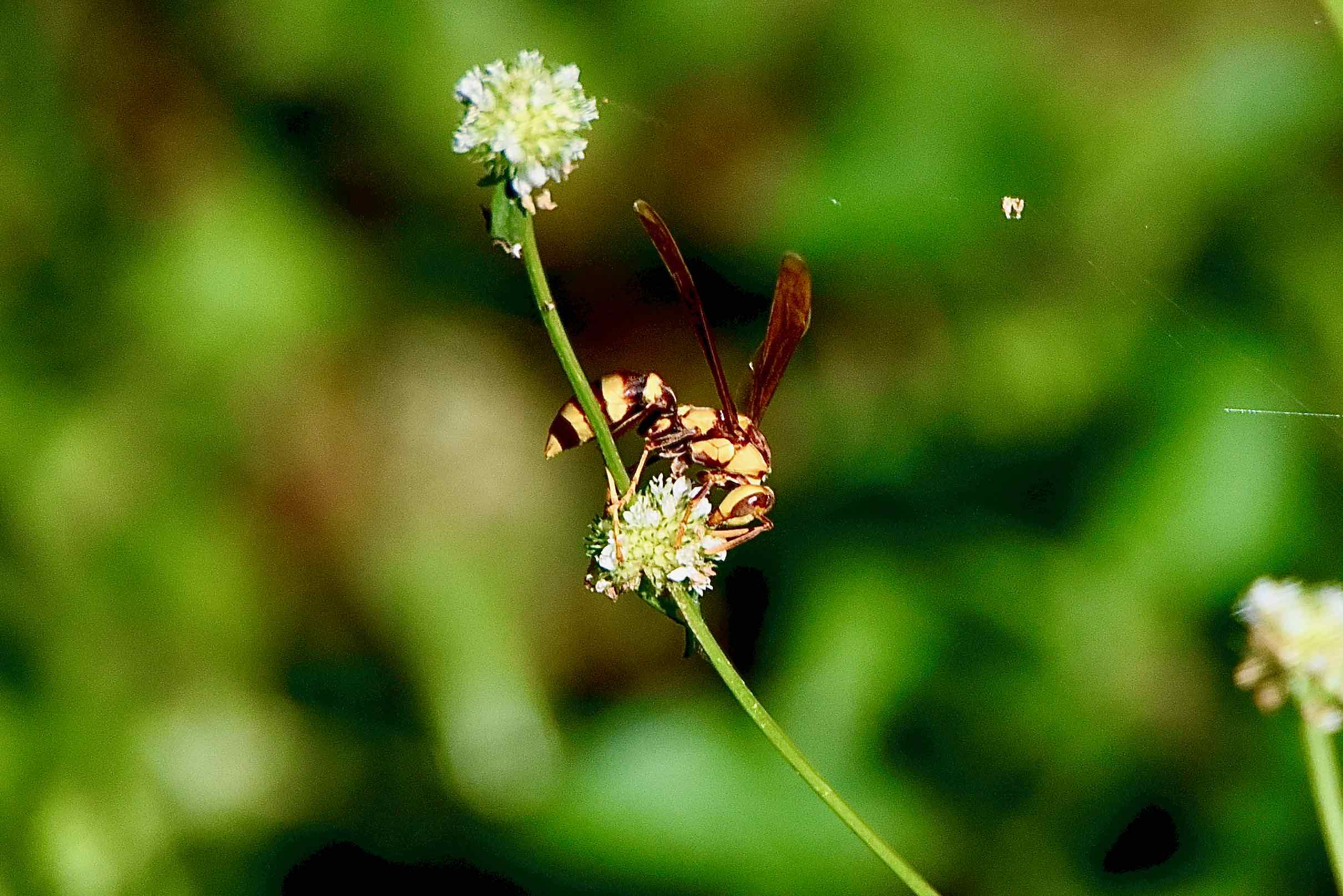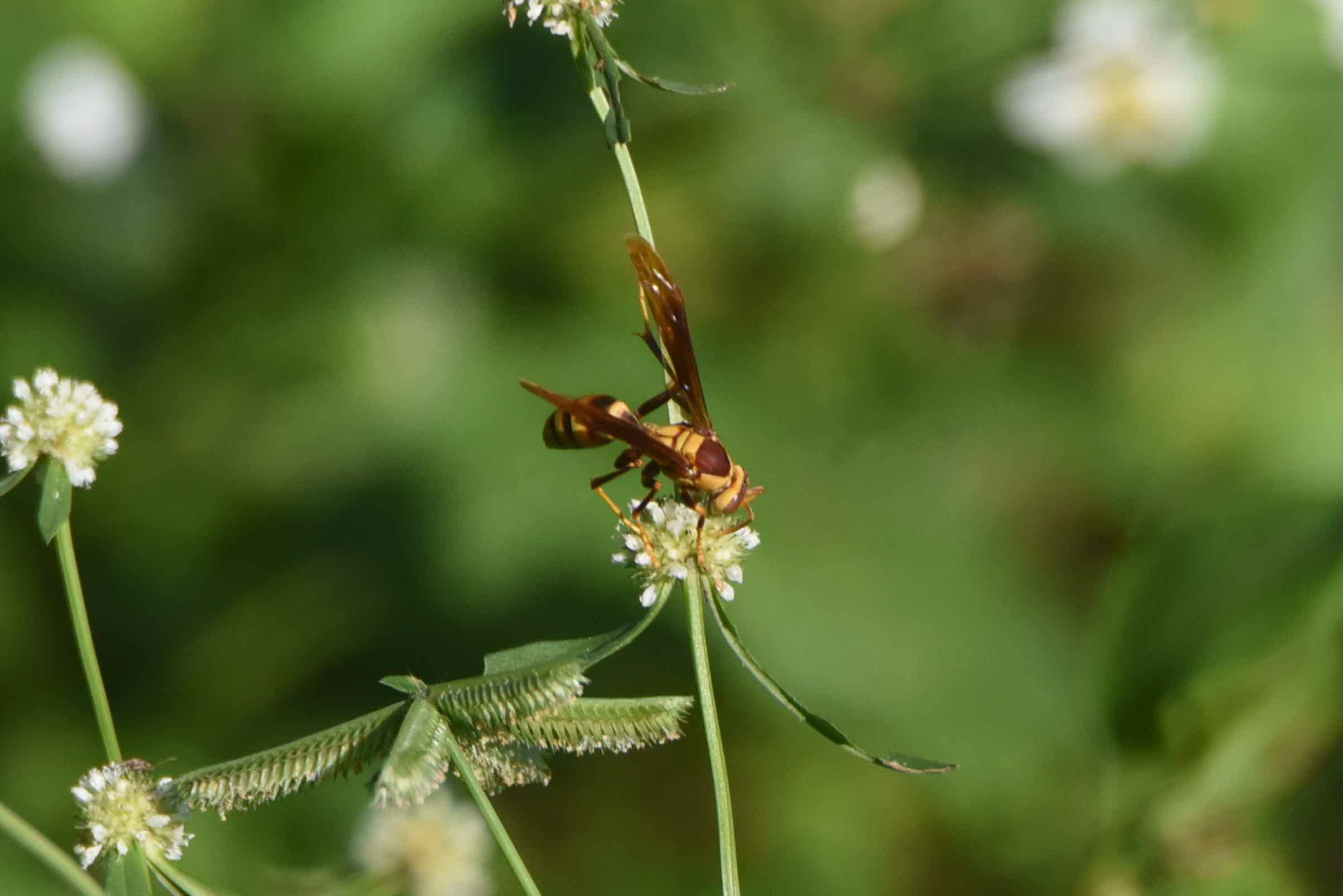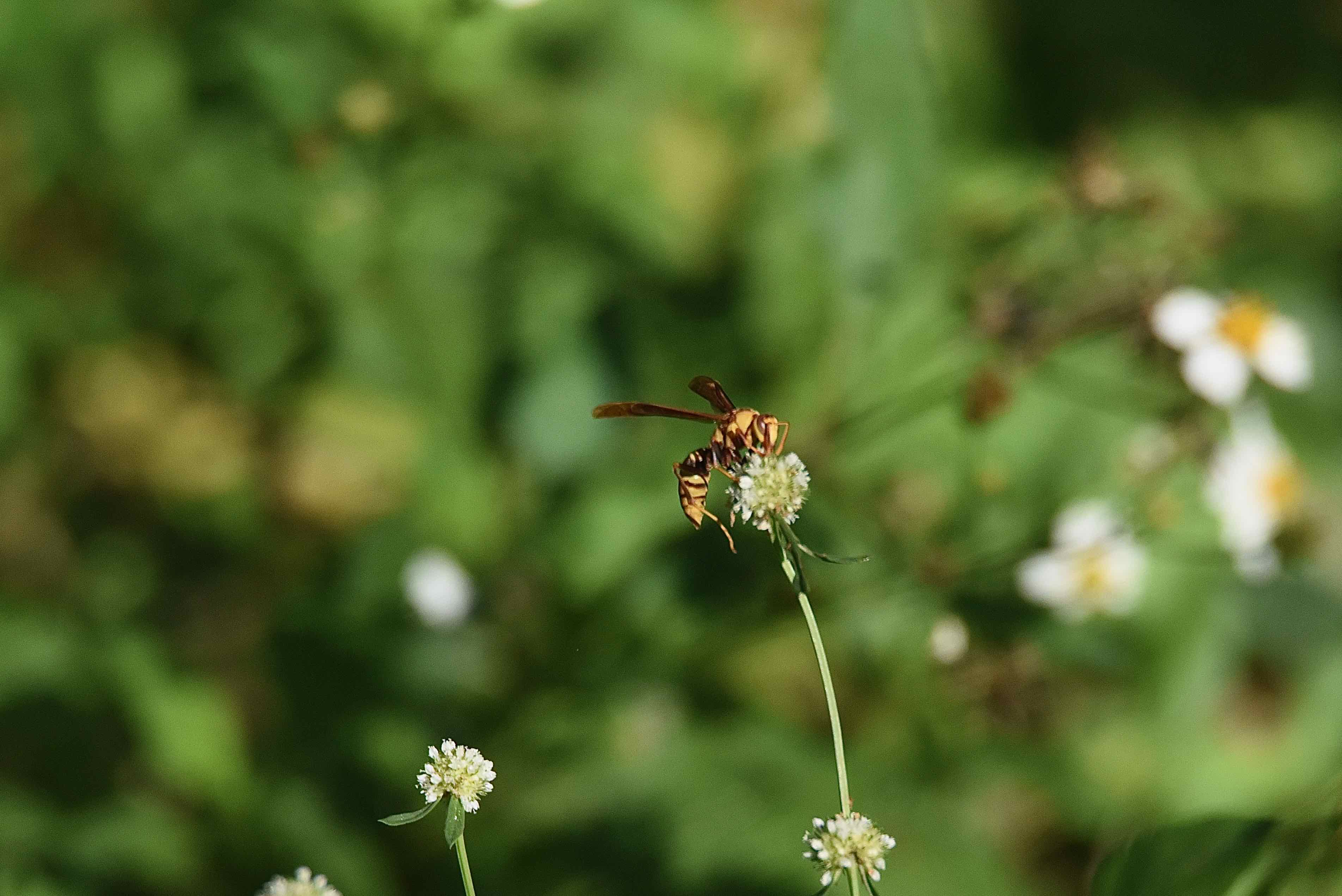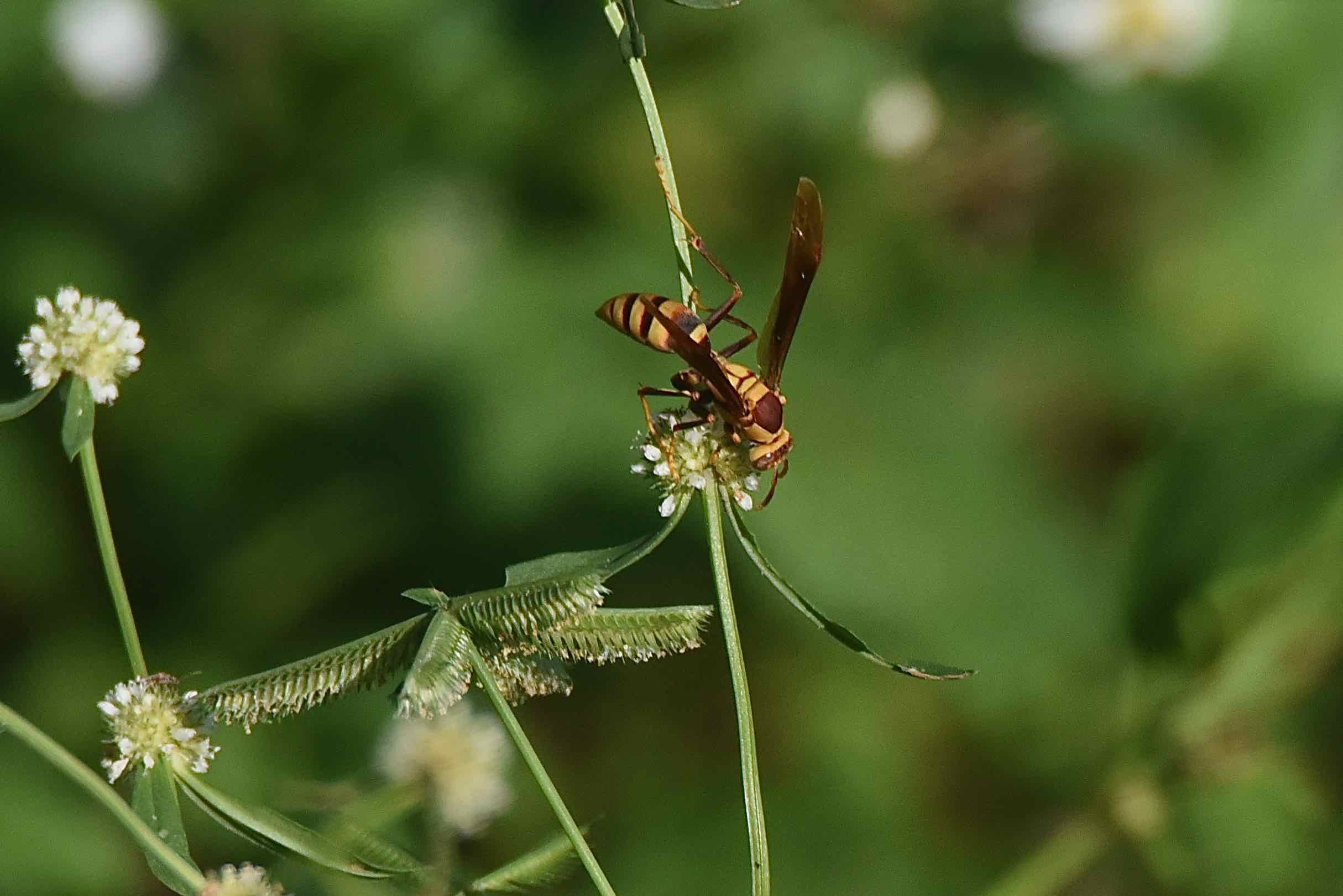
Horse's paper wasp, photographed at Loxahatchee National Wildlife Refuge, Boynton Beach, Palm Beach County, in January 2020.
This little guy, known as Horse’s paper wasp, AKA Polistes major major, really gets around. It apparently is native to the Caribbean and parts south of here, but invaded Florida more than six decades ago.
Over the last decade, it’s moved up the coast and established itself in Georgia.
More impressively, it’s cross the Atlantic and set up shop in northern Spain.
Actually, referring to this wasp as “little guy” is not quite accurate; it’s one of the larger paper wasps, with a body length between 1.1 inches and 1.4 inches. And it's female.
Like other paper wasps, it’s a social critter, with a queen, workers, males and potential queens. They build a single cone nest, open at one end and attached under the eaves of a house, on bridges, culverts, metal beams or tree branches by a single pedicel, or stem.
The nest itself is made of paper (hence the name, paper wasps) that wasps produce by chewing wood. For a little more on social aspects of Polistes, check out one of its cousins, Hunter’s little paper wasp.
It’s a native of the Caribbean, Mexico, Central America and South America as far south as Brazil. It’s also found in Florida, Georgia, where it’s definitely not native, and south Texas and Arizona. We’re not sure if it’s native or not to the Lone Star and Grand Canyon states.
It was first discovered in Florida in 1958, but probably was here years earlier. Horse’s paper wasp is found through the southern half of the Peninsula and scattered counties along the coasts.
It was discovered in Georgia in 2014 in numbers sufficient to say it had established itself there.
As for the name, Horse’s paper wasp, good question. It’s a translation of avispa de caballo, a name that’s used in the Dominican Republic, which happens to be a center of the wasp’s population.
While Horse’s paper wasp does its share of pollination, as seen in the photos, it’s also a predator, with caterpillars and tree hopper nymphs as favorite targets.
We humans are probably the medium by which Horse’s paper wasp gets around. It’s not hard to imagine these guys hitching a ride on a cargo ship moving between ports.
The Spanish population is a bit odd in that they’re smaller than the American version and also colored differently.
Horse’s paper wasp can be an invasive pest, especially in agricultural areas, and because they’re larger than most of their cousins, their stings contain more venom than other, making them somewhat more dangerous for those allergic.
Horse’s paper wasp is a member of Vespidae, the family of wasps, hornets and yellow jackets.
Arthur R. Marshall Loxahatchee National Wildlife Refuge



